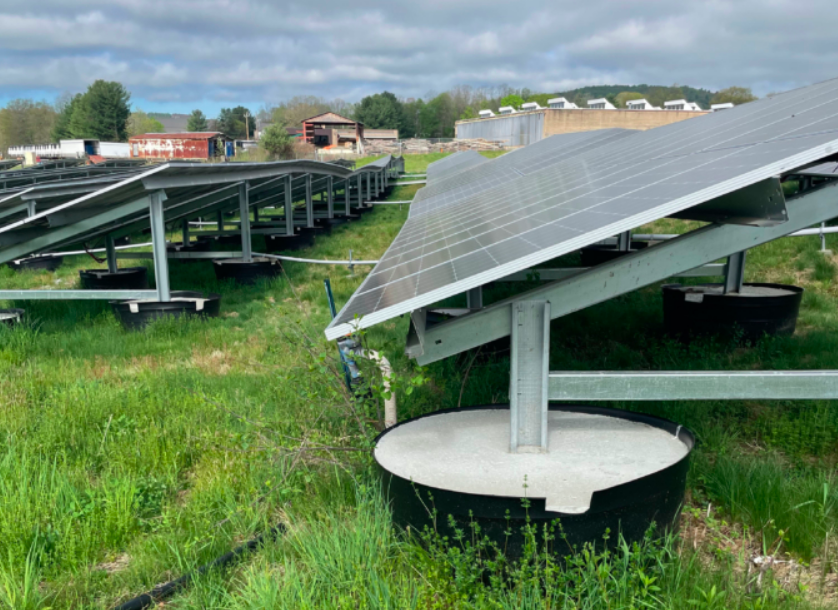
Why Doesn't the Town Build Solar? Well, Actually... It Did!
Photos in this article courtesy the Windham Solid Waste Management District.
Currently the Town of Brattleboro has invested as much as is allowed under the net metering cap that the State of Vermont has established by legislature. It did this in 2018 through a partnership with other Towns, the Windham Regional Commission, regional non-profit organizations, and the leadership of the Windham Solid Waste Management District (WSMWD).
After years of planning, a 5-megawatt landfill solar project at WSMWD was energized on June 30, 2018, and continues to produce clean, renewably generated electricity to this day. The solar project is sited on the closed and capped landfill owned by the Windham Solid Waste Management District, located on Old Ferry Road, in the industrial park at the north end of Brattleboro. With limited development potential, the landfill site has been transformed into an innovative energy resource, serving as an example for responsible siting of solar arrays for the state.
At one point, the Brattleboro landfill project was the largest solar facility proposed in Vermont, but it has since been eclipsed by much bigger projects. The project is surrounded by commercial/industrial properties, and the closest residence is located in New Hampshire, approximately 895 feet from the array, and across the river. It is also an ideal site because the project has limited visibility from most nearby vantage points, including from the Connecticut River.
“The project is the culmination of more than five years of work, much of it by volunteer representatives to Windham Solid Waste Management District,” said Robert Spencer, Executive Director.
“To build a solar array on a closed and capped landfill requires use of support structures that do not penetrate the landfill cap, so we have over 3,000 concrete ballasts supporting around 16,000 solar panels,” he said.

The property's steep banks are another tricky consideration. Sited on land overlooking the Connecticut River valley, the capped landfill follows a set of natural terraces formed when the glacier ice melted about 12,000 years ago. To maintain stability, engineers designed the array to site panels only where the grade is less than 12 percent.
With the passage of Act 99 in 2014, the Vermont legislature began encouraging exactly this type of solar array siting — expanding the net metering program to allow for solar arrays of up to 5 megawatts on closed landfills. This legislation put the Brattleboro landfill site on a level playing field with typical undeveloped greenfield sites, and provided the District with a unique opportunity to utilize the property while securing meaningful cost savings for multiple public sector entities in the region, including towns of Brattleboro, Wilmington, Readsboro, Vernon, Wardsboro, Dummerston, Halifax, and Newfane, schools in Brattleboro, Vernon, Putney, Marlboro and Landmark colleges, and non-profits including the Brattleboro Retreat.
These public sector customers receive net metering credits on electric bills for specified meters at a significant discount compared to their value. It is estimated that, in aggregate, these customers saved approximately $375,000 in the first year of project operation, with the opportunity for significantly increased additional savings over the 25-year contract period. The Town of Brattleboro’s portion of these benefits is roughly 25.3% of the overall project. In addition, the District receives annual lease revenue for hosting the project.
For the Town of Brattleboro, this all means that until the state’s net-metering cap is increased, there is little economic benefit to investing in another solar project such as this one. Additionally, from this landfill project, the Town is obligated to purchase a significant portion of its electricity according to the terms of the net-metering agreement, during the life of the array (typically 25-30 years).
As the Town’s electricity demand expands, there will be more potential for installing solar panels whose electricity is used directly at the point of generation (behind the meter). But until that point comes, there are few opportunities of significant scale for the Town to invest and benefit.
Read other articles about Brattleboro's sustainability efforts here or visit the sustainability page.

